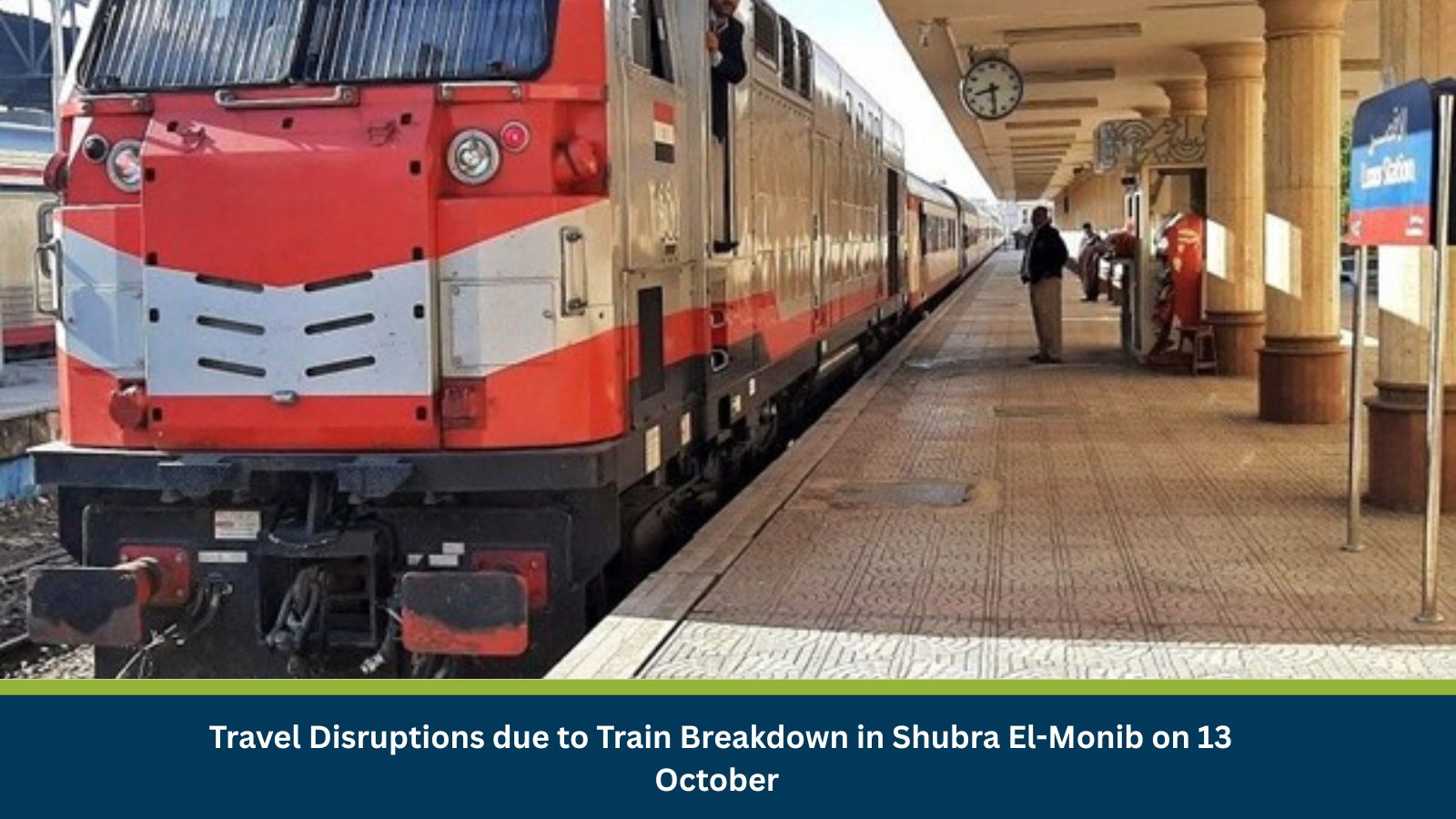What is Risk Analysis in the Context of Travel Risk Events
Travel risk analysis assesses disruptions affecting transport infrastructure, mobility, and continuity of operations. In urban contexts like Cairo, such risks arise from systemic vulnerabilities in metro and rail systems—often compounded by ageing infrastructure and rising commuter volumes. The train breakdown in Shubra El-Monib underscores chronic weaknesses in Egypt’s transport ecosystem. With Cairo Metro serving millions daily, even brief service halts can paralyze mobility, trigger traffic gridlock, and disrupt business functions citywide. Historical analogs—such as maintenance-related delays on Line 2 (Shubra El-Kheima–El-Monib) and multi-line operational slowdowns—reveal recurring fault patterns that affect public confidence and strain emergency response systems. This event thus sits at the intersection of infrastructure reliability, commuter safety, and economic resilience.
Executive Summary
- Date of Incident: 13 October 2025
- Location: Shubra El-Monib, Cairo Governorate, Egypt
- Risk Category: Travel Risks
- Severity Score: 4/5
- Confidence Level: 90%
A train malfunction near Shubra El-Monib on Metro Line 2 triggered widespread delays across Greater Cairo’s rail and road networks. Initial reports confirm halted metro operations and cascading congestion across major corridors, including October Bridge, Ramses, and Salah Salem. The likely disruption window spans 24–48 hours for transit recovery, with residual effects on commuter flow for up to seven days. The high severity rating reflects both the criticality of the affected corridor and Cairo’s dependency on metro connectivity for workforce mobility.
Current Updates
Egyptian media sources (e.g., Shorouk News) confirm a mechanical failure that immobilized a metro train on Line 2, causing immediate commuter buildup. Maintenance crews were dispatched, but service resumption remains staggered. Crowded interchange stations (e.g., Sadat, Giza, Ramses) report operational stress. Road congestion intensified as commuters shifted to buses, taxis, and ride-share services.
Known Hotspots and Sensitive Areas
- High Impact: Shubra El-Monib and Shubra El-Kheima (Line 2 terminus).
- Medium Impact: Ramses, Giza, and October Bridge—critical transit arteries.
- Low Impact: Peripheral Cairo districts—indirectly affected through traffic overflow.
Impact on Transportation and Services
- Metro: Line 2 suspended between El-Monib and Giza, with delayed resumption toward central Cairo.
- Roads: Severe congestion expected along October Bridge and Salah Salem, replicating historic traffic surges after metro outages.
- Commuter Services: Ride-sharing costs and waiting times likely to surge 40–60%.
- Business Operations: Staff delays and absenteeism expected across central Cairo offices and retail zones.
Recommended Actions
- Immediate: Notify employees and clients of transport disruption; enable flexible or remote work for affected commuters.
- Operational: Reassign resources for critical tasks; prioritize client deliverables dependent on local mobility.
- Continuity: Activate Business Continuity and Crisis Management Teams; monitor updates from Cairo Metro (16048) and Egyptian National Railways (15047).
- Safety: Advise commuters to avoid overcrowded stations and follow official traffic advisories.
Multidimensional Impact
The train breakdown in Shubra El-Monib will primarily exacerbate travel conditions across Greater Cairo, indirectly affecting some of the non-related events. While the ‘Power outage in several areas of Al-Shorouk’ and ‘Fire at Cotton Factory in Qalyubia Controlled by Firefighters’ are geographically distinct and unrelated, emergency services responding to these incidents could face delays due to the increased traffic congestion stemming from the train breakdown. Similarly, the ‘Continuation of Trial of Defendant Accused of Joining Terrorist Group in Al-Omrania’ and ‘Continuation of Trial for 64 Defendants in the “New Cairo Terror Cell” Case’ may experience delays for participants (defendants, lawyers, witnesses, judges) commuting from affected areas of Cairo and Giza. The ‘Electric Short Circuit Causes Huge Fire in Residential Apartment’ could also see delayed emergency response if the location is in an area impacted by traffic diversions.
Emergency Contacts
- Police: 122
- Fire: 180
- Ambulance: 123
- Cairo Metro Hotline: 16048
- Egyptian National Railways: 15047
Final Thoughts
Recovery is expected within 48 hours, though congestion and service reliability challenges may persist for several days. Key watchpoints include secondary breakdowns on adjacent lines and public discontent arising from extended delays. The incident highlights the fragility of Cairo’s urban mobility network and underscores the need for predictive maintenance, redundancy planning, and real-time monitoring systems to enhance resilience and minimize cascading disruptions. Stay ahead of operational risks with real-time alerts, scenario modeling, and expert advisories with datasurfr’s Predict. Start your 14-day free trial of Datasurfr’s Risk Intelligence Platform today.






